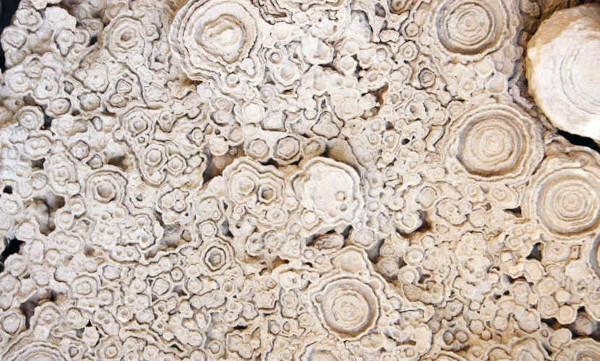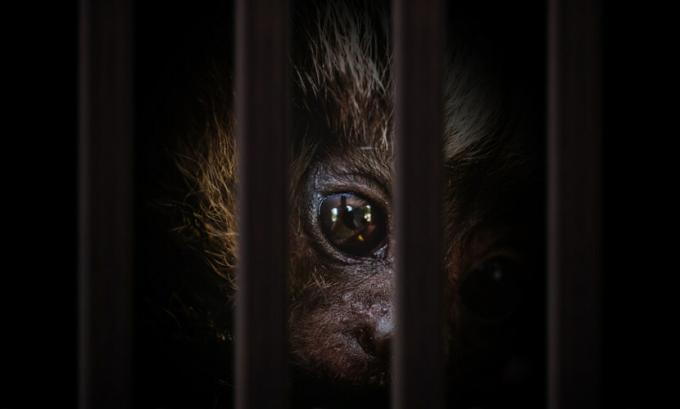THE origin of life on earth it has been a theme that has intrigued mankind for a long time. THE Earth it is approximately 4.6 billion years old, however, this age does not coincide with the appearance of life on the planet. Initially the Earth had characteristics that prevented the development of life, such as the lack of Water. As the planet cooled, primitive life forms emerged.
The first known evidence of life dates back to 3.5 billion years and comes from fossilized stromatolites. Stromatolites are rock structures produced by microorganisms that form microbial films that trap mud.
Read too: What are fossils?
Abiogenesis and Biogenesis

In the past, knowledge about the ways in which living beings reproduce was precarious, which made the understanding of the emergence of life to be misunderstood. At first, it was believed that living beings arose out of lifeless matter and spontaneously. A white shirt and flour, for example, could be responsible for the emergence of rats. That
vision, that life arose from inanimate matter, was known as abiogenesis theory.Several researchers have carried out studies in order to overturn this idea, one of them being the French scientist Louis Pasteur. He was responsible for definitively overthrowing abiogenesis through a experiment with glass flasks. This researcher prepared a nutritious broth and placed it inside these jars. Afterwards he stretched and bent the necks in the fire, thereby boiling the nourishing broth and making it sterile. The researcher waited for the material to cool down and left his experiment at room temperature.
After a few days, Pasteur noticed that the broth continued without any organism developing. He then understood that the curvature of the neck prevented the entry of microorganisms. Upon breaking the bottleneck, the researcher noticed that microorganisms developed in the broth. He could therefore conclude that life did not arise from inanimate matter, but from another preexisting life — biogenesis theory.
The microorganisms in the broth only developed due to the contamination that occurred when the substance came into contact with the air. Despite refuting abiogenesis and strengthening biogenesis, Pasteur's experiment did not answer the question of how the first life form formed.
Read more: Redi experiment – collaborated in the understanding that a living being cannot arise from lifeless matter
How did the first life form form?
One of the most accepted theories currently to explain the origin of life on Earth is the one proposed in the 1920s by the Russian chemist oparin and the British scientist Haldane. Independently, these researchers raised the hypothesis that the atmosphere primitive allowed the formation of organic compounds based on simple molecules.

According to this hypothesis, the atmosphere of the early Earth was formed by gases such as methane, ammonia, hydrogen and water vapor. Under the action of electrical storms and intense ultraviolet radiation, simple molecules underwent chemical reactions and formed more complex molecules, such as amino acids.
The molecules then began to arrange themselves and combine with each other. According to Haldane, the primitive oceans were a solution rich in organic molecules, a kind of primitive soup, in which life emerged gradually.
In 1953, the Oparin-Haldane hypothesis was tested by Stanley Miller and Harold Urey. They created, in the laboratory, the conditions that Oparin and Haldane believed existed on the early Earth. The result of the experiment was the production of organic molecules.
It is worth noting, however, that today it is known that the primitive atmosphere did not present the conditions proposed by Oparin and Haldane. However, experiments similar to those carried out by Miller and Urey, using the characteristics of atmosphere that we now believe the primitive Earth possessed, were also able to produce molecules organic.
Read more: Earth system - combination of elements necessary for the composition of life
Were early life forms autotrophic or heterotrophic?
Based on the understanding of how the first living beings appeared on our planet, another question arose: how did primitive organisms get their food? We have two hypotheses to answer this question: the autotrophic and the heterotrophic. According to the hypothesis autotrophic, the first living beings were able to produce their own food through different chemical processes.
Probably, these organisms were beings chemosynthetics that used energy from the oxidation of inorganic compounds to produce their organic matter. the hypothesis heterotrophic, in turn, states that the first living beings were incapable of producing their own food and fed on simple organic molecules that were available in the environment.
Both hypotheses received criticism. While proponents of the autotrophic hypothesis claim that the first organisms did not have organic matter in the amount necessary for their development, proponents of the heterotrophic hypothesis claim that the first living beings did not have the necessary apparatus to produce their food.
Other hypotheses for the origin of life
Other hypotheses try to explain the origin of life on our planet. Among the main ones, we can mention creationism and the panspermia. According to creationism, all living things were created by God, as reported in the Bible. In the hypothesis of panspermia, in turn, life on the planet would have arisen from raw material coming from space.
Origin of Life Exercises
|
question 1 (UFPB) Regarding the primitive land, it is correct to say: a) Water was restricted to glaciers and frozen oceans. b) Protozoa were the first living beings that emerged. c) The atmosphere had high concentrations of oxygen, nitrogen, hydrogen and carbon in a gaseous state. d) The strong electrical discharges and the large amount of ultraviolet radiation were fundamental for the formation of the first organic molecules. e) Chemolithoautotrophic organisms produced their food from carbon molecules. |
Reply:Letter D. Electrical storms and intense ultraviolet radiation were important for chemical reactions to occur and organic molecules to form.
|
question 2 (Unicentro) There are many discussions about the origin of life on planet Earth. Studies on the subject show the importance of technological advances and research for the improvement of hypotheses about the origin of life. However, after a few centuries of studies, despite considerable advances, there are still many unanswered questions. On the main theories of the origin of life, it can be stated: a) Haldane and Oparin admitted that inorganic molecules, found in the primitive atmosphere, would have combined, originating simple organic molecules, which would later acquire the capacity for self-duplication and metabolism. b) The theory of abiogenesis was confirmed by the research carried out by Pasteur, in which microorganisms were found in flasks with “swan necks”, after the boiling process. c) Technological advances and current research allowed defining the discovery of life as being through the evolution of inorganic components originating on planet Earth itself. d) According to panspermia, the first living beings would have come from the cosmos and would be multicellular and autotrophs. e) The researches carried out were able to prove the autotrophic hypothesis, as there were not enough nutrients on the primitive Earth to supply living beings. |
Answer: Letter a. One of the most accepted hypotheses to explain the origin of life is the one proposed by Haldane and Oparin. She admits that inorganic molecules underwent a series of chemical reactions that led to the formation of organic molecules. Subsequently, these molecules underwent modifications and acquired the ability to divide and metabolism.


